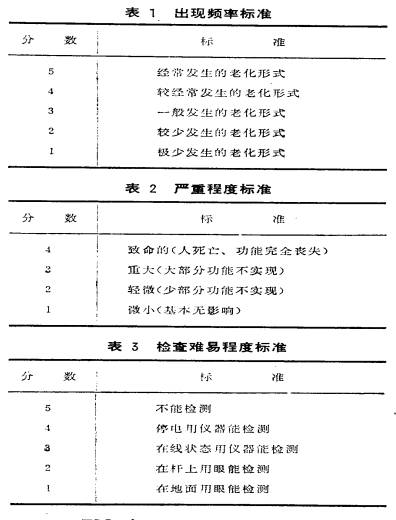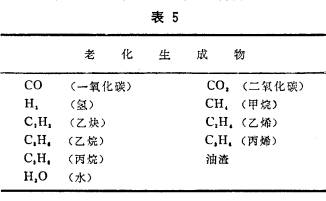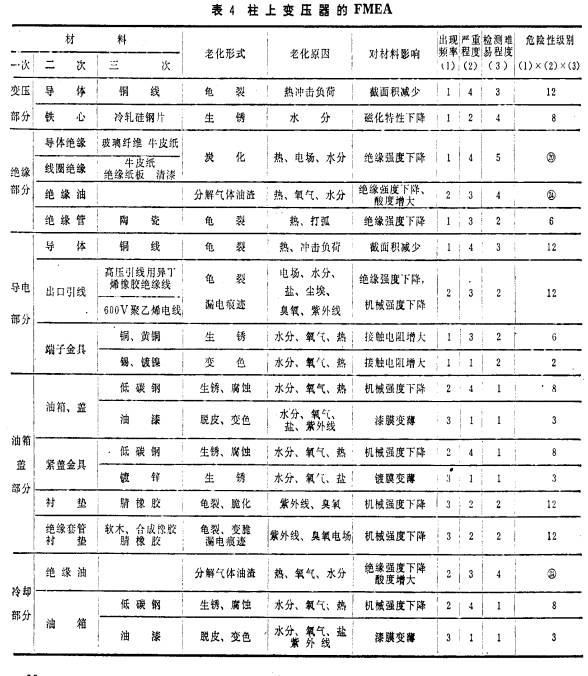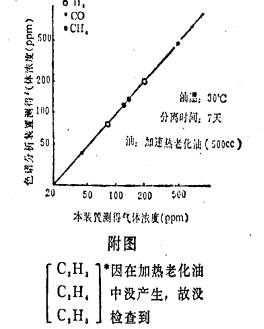The aging causes of distribution transformers include electric fields, heat, light, water, and salt. Among the aging manifestations, the decrease in insulation strength is most prominent. The following describes the application of FMEA (aging form and impact analysis) method for online diagnosis of transformer aging on the column.
A principle of FMEA method

First find out all forms of aging according to the structure and materials of the transformer, and study the main causes of aging and the impact on the transformer material. Then, according to the standards in Tables 1 to 3, the "occurrence frequency", "severity" and "inspection degree of difficulty" were selected respectively, and the "hazard level" was selected by the score product of the above three criteria. The FMEA method of the on-column transformer is shown in Table 4. The aging method with high “hazard level†established on the table is indicated by the “○†symbol. It can be seen from the table that the aging materials with high “hazard level†are insulating paper and insulating oil.
Second, the aging process
The insulation paper of the coil is made of fiber molecules; it ages due to the effects of heat and oxygen. During the aging process, the low molecular weight of the fiber changes, and the average degree of polymerization decreases to produce CO2, CO, and H2O.
The insulating oil changes due to the presence of oxygen. On the other hand, the aging process is more accelerated due to the increase in oil temperature and contact with metals such as copper and iron. As a result, the gas is decomposed and oil residue is generated.
Due to the above-mentioned aging of insulating paper and insulating oil, the products of Table 5 are dissolved and suspended in the oil.

In order to find a method for online detection of aging, the materials that make up the transformer on the column-insulating paper, coil, iron core, etc., are sealed in the container at the same proportion of the actual object, and an accelerated thermal aging test is performed to observe the thermal aging characteristics and melting Changes in the gas in the oil. Test conditions: a) heating temperature 125 ℃, b) heating time 2 months; 4 months, 6 months. In the test method, three samples are placed in a constant temperature bath and heated. After 2 months, 4 months, and 6 months, one sample is taken out, and the characteristics of insulating paper, insulating oil, and aging products are measured. In addition, a sample is placed at room temperature for 2 months and then subjected to the same test as the heating sample, and the result is taken as the initial value of 0 months.
The test results show that as the thermal aging time increases, the acid value of the insulating oil increases significantly, but there is no obvious trend of breakdown voltage, and there is not much difference between the samples. The tensile strength and the degree of polymerization of the insulating paper are reduced, but the breakdown voltage is basically not reduced. The amount of CO2 + CO produced increased significantly.
Generally, when the degree of polymerization of the insulating paper reaches 20%, the low mechanical strength will basically disappear, so this value can be used as a life standard. However, considering the safety margin, the degree of polymerization is actually 30% as the criterion for judging aging.
It is impossible to remove the insulating paper from the running transformer to measure the degree of polymerization of the insulating paper. However, the gas generated during thermal aging is easily known. According to various studies, CO2 and CO production have a very close relationship with the degree of polymerization of insulating paper. Therefore, this correspondence can be used to convert the degree of polymerization by the amount of CO2 and CO produced. As a result, when the degree of polymerization is 30%, the corresponding amount of CO2 to CO produced is 1.0 ml / g (ml / g). Therefore, 1.0ml / g can be used as a criterion for judging aging. It can be seen that the online detection of transformer aging, as long as the amount of CO2 + CO generated during the aging process can be detected.

3. Online detection of transformer aging on the column
The results of the study show that ultrasonic sensors and CT can detect partial discharges of transformers, and contact combustion gas sensors can detect combustible gases generated during the aging process.
Install the ultrasonic sensor outside the transformer tank. Or install CT on the grounding wire to detect partial discharge, and use MCA (multi-channel analyzer) to measure and analyze the number of discharge pulses whose peak value reaches the corona level during partial discharge. This method was used to diagnose the aging of the transformer that was installed for a long time, and then 9 of them were removed and disassembled for investigation. The results are shown in Table 6. It can be seen that this method is a diagnostic technique with high accuracy.

Connect the portable contact combustion gas sensor to the oil drain pipe of the transformer, and this sensor detects 6 kinds of gas (H2, CH4, C2H6, C2H4, C2H2, CO) separated from the polymer membrane. If there is any abnormality in the absolute quantity, the ratio of each component and the amount of CO can be used to calculate the abnormal state of the transformer with a microcomputer. Since this sensor uses a polymer gas-permeable membrane to separate gases dissolved in oil, it takes a certain time (about a week), but the results show that the measurement accuracy of this method is the same as the measurement accuracy of the chromatographic analysis device. Figure.

The above-mentioned online diagnosis technology of on-column transformer aging using partial discharge and flammable gas sensors detects phenomena that occur during the aging process, thereby predicting the aging of the transformer is feasible. But further research is needed to improve the diagnostic accuracy of partial discharge in the future.
Step Trash Can could be easily controlled by your foot to open or soft close the lid smoothly. The Pedal Garbage Bin is designed with strong steel pedal, inner bucket and stainless steel lid. Some Foot Pedal Rubbish Can are equipped with build-in odour filter placement. You could place odour filters inside the lid to reduce the moisture and odours inside the bucket. The surface of step compost bin is made by high-quality matt finish 430 stainless steel, so its surface is anti-fingerprinting and easy to clean. And its inner bucket is made by PP and it is always designed with a trash bag fixer hole in the bucket to help you fix the trash bag effortlessly.
Step Trash Can, Pedal Garbage Bin, Foot Pedal Rubbish Can, 13 Gallon Pedal Litter Can, Step Compost Bin with Innner Bucket
ZHEJIANG ERHUI TECHNOLOGY CO.,LTD , https://www.jahhome.com